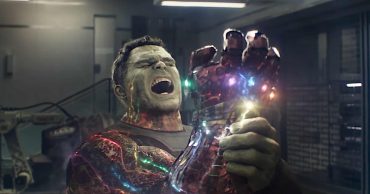
3D Movies have a long history in cinema. In fact, The Power of Love, which came out in 1920, is considered the first 3D movie screened for mainstream audiences. Obviously, technology was vastly different during that time period as Hollywood was in the process of transitioning from the silent era in the late 20s. Nearly 50 years later, the technology of the 3D format saw Friday the 13th Part III, Jaws, and Amityville all in 3D. As time flew by, the 3D format became more prominent in the world of films; however, it wasn’t until Avatar pushed the boundaries of the technology that made the format a hot commodity. Of course, it helped that the James Cameron film made over $2 billion worldwide, making executives and producers believe that 3D was the future of filmmaking altogether. It wouldn’t take long for the concept to see a weekly occurrence in movies, with some of the biggest films such as Alice in Wonderland, Toy Story 3, and The Last Airbender marking their territory under the popular format.
The 3D format was considered a success when it burst onto cinema screens and more often than not, 3D movies tended to do better at the box office. 3D films actually generated $2.2 billion in revenue at the box office in 2010, a year after the historic Avatar made its theatrical debut. However, that number would decline as years passed in 2017, the revenue saw an 18% decline, according to a report from the Motion Picture of America. By the time 2019 rolled around, 3D televisions were no longer in production and IMAX began to phase out the 3D screens. The format isn’t exactly dead, but it hasn’t reached the heights that it did following the massive success of Avatar. So, the question is, what happened? Why did the 3D craze fizzle out? There are several reasons for that answer actually. One of the biggest issues regarding the format is that it caused some health problems. Disorientation, nausea, and oculomotor were reported by several moviegoers due to the effects of 3D. According to one study done back in 2013, 497 healthy adults’ self-administered on a convenience sample on the vision before and after 2D and 3D movies. A total 54.8% viewers reported sickness after experiencing a 3D movie, which pales in comparison to 14.1 of the total sample who watched 2D movies. This wasn’t a major cause for health concerns, but the health issues regarding 3D films definitely kept most audiences from purchasing a ticket.
Speaking of purchasing a ticket, 3D films are part of the reason that ticket prices became so high. Following the huge demand in 3D movies, tickets prices were raised in 2010, increasing on average at 8.3% at the box office nationwide, according to CNN Money. It wasn’t just 3D movies that were affected, as IMAX films increased their prices by 10% and regular 2D movies by 4%. The days of cheap $5 tickets were a thing in the past for most of the world as in some cases, adult ticket prices were as high as $15.50. If you’re on a date, that’s $31, in addition to parking, and food and drinks (which are not cheap at theaters). That’s $16 more than the ticket average price of $7.50 a year prior. 3-D was always the most expensive. While IMAX and regular 2D movies also saw a price hike, they didn’t burn through audiences’ wallets like 3D ticket prices. If also didn’t help that at the end of the day, most 3D films were simply awful. While it’s not confirmed that filmmakers focused more on the 3D format, more often than not, the gimmick took over some of the most important aspects in regard to storytelling: meaning the lack of character development or a cohesive narrative felt second to the 3D effects presented onscreen. Other than Avatar, animated features had the most success with the gimmick as movies such as Up, Toy Story 3, and How to Train Your Dragon are highly considered some of the best animated films ever made. However, movies such as Resident Evil Afterlife, Saw 3D, Texas Chainsaw 3D, and Wrath and Clash of the Titans exemplifies the problems mentioned earlier in regard to 3D filmmaking. The features lacked any true substance and in several cases, the 3D attraction wasn’t worth the $15.50 most people were paying to see. Given the fact that making a 3D movie costs a pretty penny, movies started failing to be a big profit for Tinseltown altogether. The 3D format isn’t completely dead as animated features still play with the concept, but not many. In retrospect, the 3D gimmick was novel idea, and it should be interesting to see how Avatar 2 turns out, but the chances of the gimmick reaching the heights of early 2010s are very slim.
 Follow Us
Follow Us





